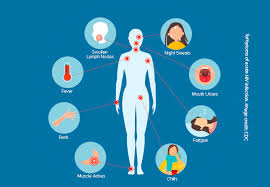the global health agency noted that HIV infection has become a manageable chronic health condition, enabling people living with HIV to lead long and healthy lives.
“As a result of concerted international efforts to respond to HIV, coverage of services has been steadily increasing. In 2019, 68 per cent of adults and 53 per cent of children living with HIV globally were receiving lifelong antiretroviral therapy.
“About 85 percent of pregnant and breastfeeding women living with HIV also received antiretroviral therapy, which not only protects their health, but also ensures prevention of HIV transmission to their newborns,” it stated.
In an interview with PUNCH HealthWise, LSACA Chief Executive Officer, Dr. Monsurat Adeleke, said 285 fatalities comprising 143 males and 142 females were recorded in Lagos State.
“Between January and June 2020, a total of 285 people living with HIV were reported to have died (143 males; 142 females). We also recorded about 8,385 new infections during the period under review,” she said.
While analysing the fresh infection statistics, Adeleke reiterated that 234 was recorded at the facility for Prevention of Mother-to-Child Transmission, 3,174 among the Most-At-Risk Populations, 4,849 at HIV Testing Services and 128 by General Practitioners.
Continuing, she observed that the 285 mortality during the first two quarters of 2020 when compared with the statistics recorded in 2019 was relative low.
She noted that a total of 1,019 HIV/AIDS-related deaths, which consisted of 430 males and 589 females, were recorded between January and December 2019.
She partly attributed the low mortality rate and new infections to the disruption brought about by the outbreak of COVID-19 pandemic.
“Remember that it was the period of COVID-19 outbreak and emergency lockdown in the state,” she said.
In 2019, the Joint United Nations Programme on HIV/AIDS and the National Agency for the Control of AIDS estimated that there are 1.9 million people living with HIV in Nigeria.
According to UNAIDS, the data from the Nigeria National HIV/AIDS Indicator and Impact Survey are based on a revised and enhanced methodology.
The survey provides a clearer understanding of Nigeria’s HIV epidemic and shines a light on progress and the remaining gaps and challenges.
The NAIIS data further made the UNAIDS Executive Director, Michel Sidibé to stress that an improved understanding of the country’s HIV epidemic would allow Nigeria to easily reach people living with HIV and people at higher risk of acquiring HIV.
“While it is fantastic news that there are fewer people living with HIV in Nigeria than previously thought, we must not let down our guard. Let us use the results of this survey to better focus our delivery of HIV prevention, treatment and care services to the people in the greatest need and ensure that Nigeria gets on track to end the AIDS epidemic by 2030,” he stated.
While Nigeria’s national HIV prevalence was 1.4 per cent among adults aged 15–49 years, women aged 15–49 years were said to be twice likely to be living with HIV than men (1.9 per cent versus 0.9 per cent).
In a related development, Eti-Osa (3.3%) and Ikeja (3.1%) lead the pack of Local Government Areas in Lagos with the highest prevalence rates among adults between 15-64 years, respectively.
Others were Ojo (2.5%), Epe (2.0%), Ajeromi-Ifelodun (1.9%), Oshodi-Isolo (1.7%), Apapa (1.6%), Lagos Island (1.6%), Badagry (1.2%), Ibeju-Lekki (1.5%), Ifako-Ijaye (1.4%), Ikorodu (1.5%), Kosofe (0.8%), Lagos Mainland (0.4%), Mushin (0.9%), Agege (0.5%), Alimosho (0.2%), Amuwo Odofin (1.1%), Shomolu (0.6%) and Surulere (0.8%).
According to the CEO of Lagos State AIDS Control Agency, the prevalence rates of the infection in the aforementioned LGAs were identified using the Nigeria HIV/AIDS Indicator and Impact Survey 2018.
She justified the agency continual use of NAIIS statistics when she stated emphatically that conducting a survey of such magnitude was an expensive venture.
“This was a very expensive household survey that was sponsored by the US PEPFAR, UNAIDS and NACA. It is the most updated and was disseminated (released) by the Governor of Lagos State in 2019.
The disaggregation LGA by LGA is the first of its kind in Sub Saharan Africa,” she said.
As at June 2020, the number of PLWHA receiving Anti-retroviral Therapy had increased to a total number of 79,412.
She believed that it was a remarkable improvement during the six-month period when compared to the 2019 index where only 78,052 people living with HIV could access ART.
When asked why the agency doesn’t usually present statistics on the number of infants and minors infected with the virus, Adeleke emphasised that the exact number of children living with HIV was unknown, unless LSACA resort to the use of Estimation and Projection Package and Spectrum.
source: Punch

 The Lagos State AIDS Control Agency says an estimated 285 Persons Living With HIV/AIDS died in the first two quarters of 2020. The agency also disclosed that the state recorded about 8,385 fresh infections, with Eti Osa, Epe and Ikeja leading the pack of local governments with the highest prevalence rates.
The Lagos State AIDS Control Agency says an estimated 285 Persons Living With HIV/AIDS died in the first two quarters of 2020. The agency also disclosed that the state recorded about 8,385 fresh infections, with Eti Osa, Epe and Ikeja leading the pack of local governments with the highest prevalence rates.




